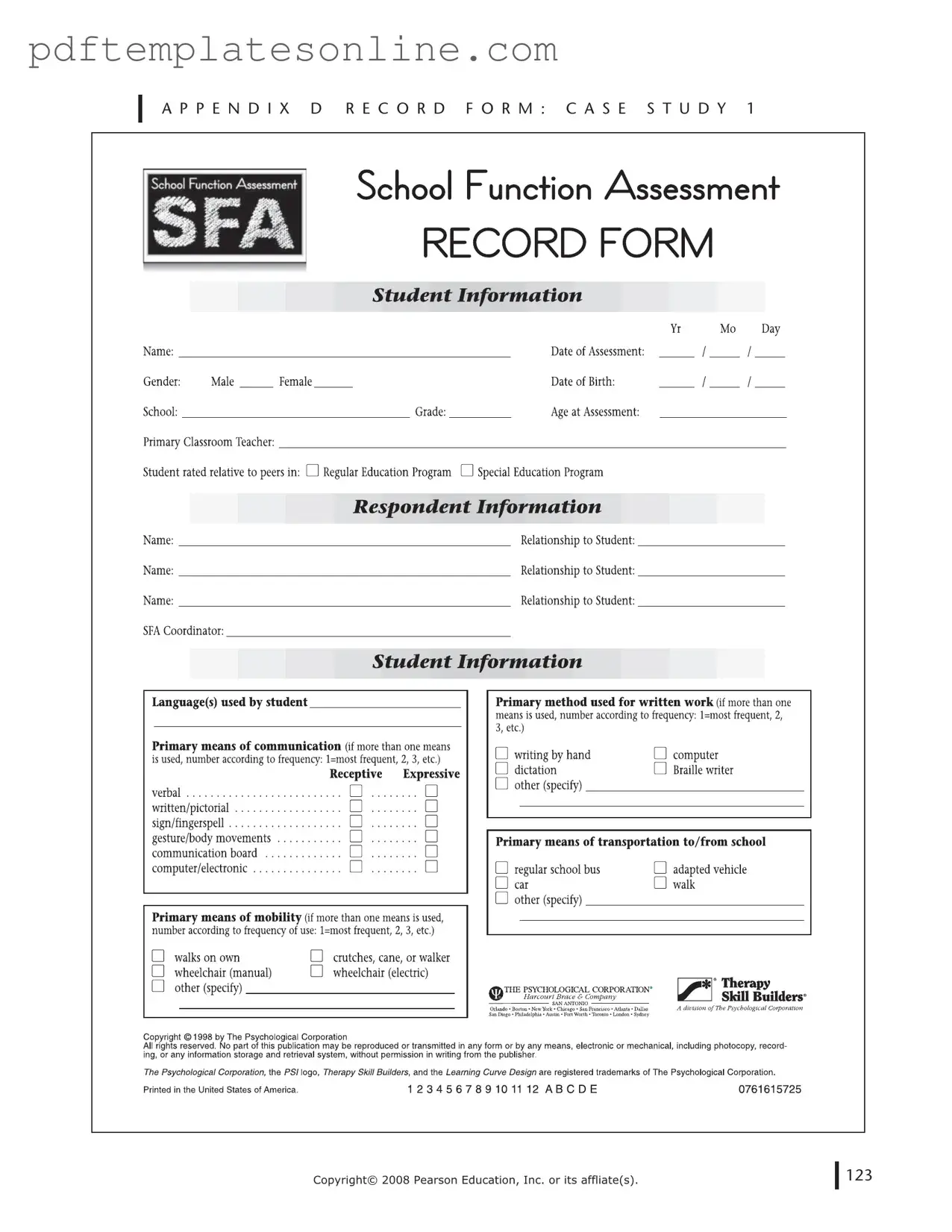Filling out the School Function Assessment form can be challenging. Many individuals make common mistakes that can lead to inaccuracies in the assessment. One significant error is not providing enough detail in the responses. Each section of the form is designed to capture specific information about a student’s abilities and needs. Vague answers can hinder the understanding of the student’s situation.
Another frequent mistake involves overlooking the instructions provided with the form. Each assessment has guidelines that explain how to complete it properly. Ignoring these instructions can result in misinterpretation of questions or improper formatting of answers, which can affect the overall assessment process.
Additionally, many people fail to update information that may have changed since the last assessment. A student’s abilities, challenges, and circumstances can evolve over time. Using outdated information can lead to incorrect conclusions and ineffective support strategies.
Another common issue is inconsistent terminology. Using different terms to describe the same behavior or skill can confuse the evaluators. Consistency in language helps ensure that everyone involved has a clear understanding of the student’s needs and capabilities.
Moreover, individuals often neglect to involve other stakeholders in the process. Input from teachers, therapists, and family members can provide a more comprehensive view of the student’s functioning. Failing to gather this information can result in a narrow perspective that does not fully capture the student’s strengths and weaknesses.
Lastly, some may rush through the form, leading to incomplete answers. Taking the time to carefully consider each question is essential. Rushed responses can overlook critical details that are vital for an accurate assessment, ultimately affecting the support the student receives.
